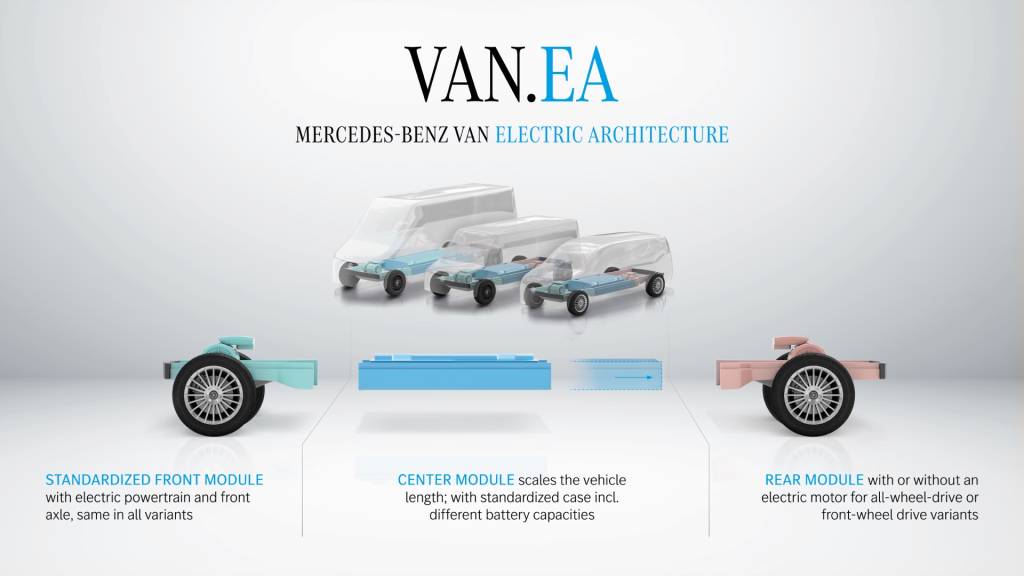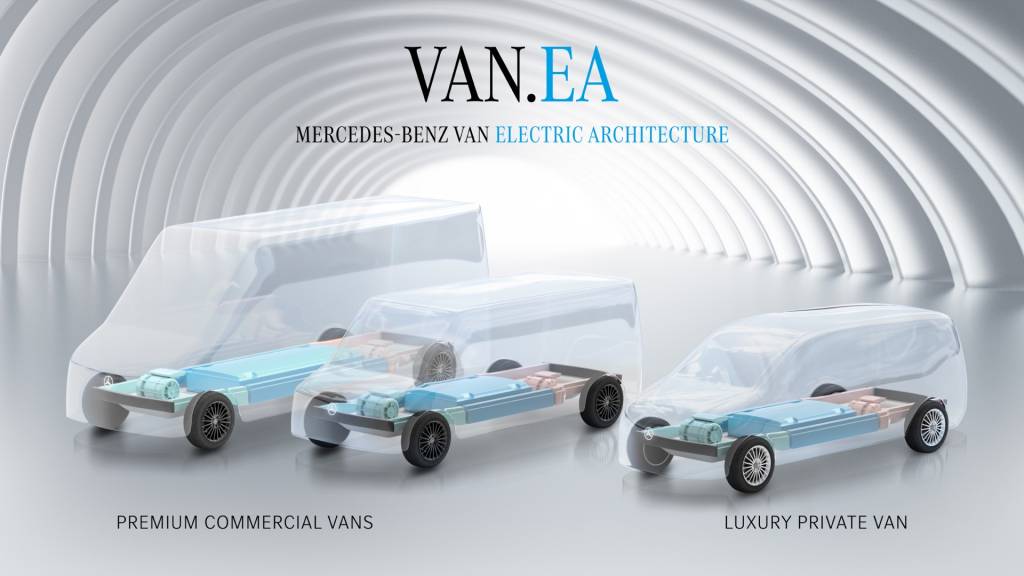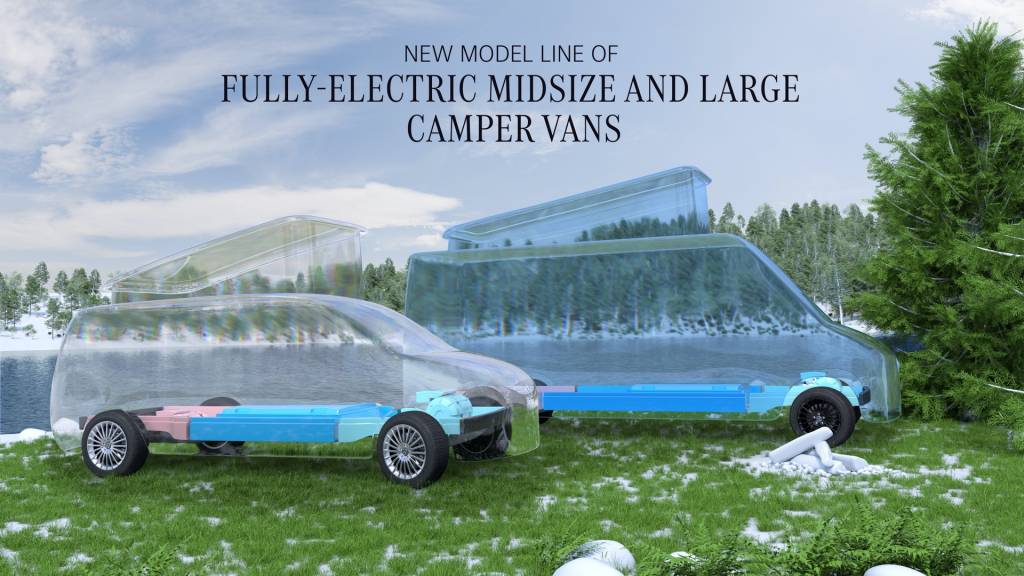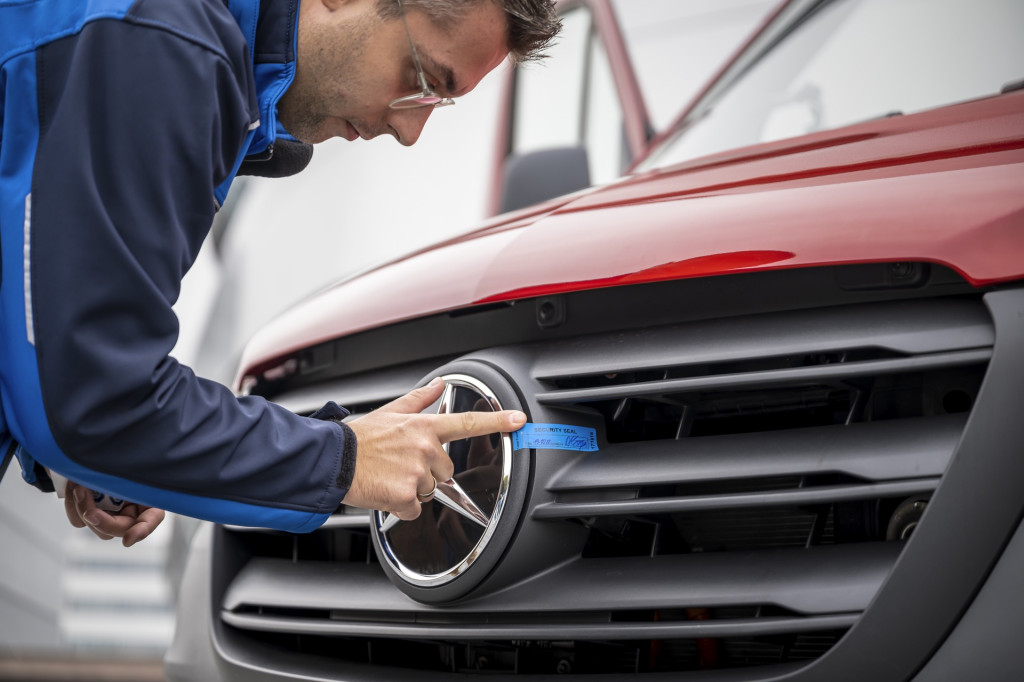Mercedes-Benz plans to introduce luxurious mid-size electric passenger vans for the U.S. and China for the first time, along with factory-built RVs, it revealed on Tuesday.
The announcement was part of the company’s most comprehensive look yet at its next-generation “.EA” electric architectures. All of these Mercedes-Benz electric vans will be built on a shared set of components and modules that will underpin a wide range of future mid-size and large electric vans due from the company starting in 2026—although it hasn’t yet set an end date for internal combustion vans that will continue to be made.
The company hopes to see 20% of its vans be electric by 2026 and 50% by 2030. Mercedes says that it doubled its U.S. van market share from 2018 to 2022—from 8% to 16% of the market.
Mercedes electric van progress
The leading-edge electric vans will be built on the VAN.EA platform, which aims for manufacturing scalability, efficiency, and simplification, and it completely eliminates legacy internal combustion features like fuel-cap covers and transmission-shaft tunnels. It also, according to the company, “guarantees long-term profitability.”
Vehicles built on the .EA platforms will have a wider range of body styles and design attributes, compared to those built on ICE platforms. Despite that, there will be fewer core build differences; Mercedes is aiming to reduce the number of variants by more than 50% compared to current vans, while covering the same use cases.
Mercedes-Benz says that the VAN.EA platform follows a modular strategy that allows for “a clear differentiation between vans for commercial and private use—with maximum synergies.”

Van.EA three modules
VAN.EA consists of three modular blocks. The front block is the same on all vehicles and includes the electric powertrain and front axle. A center block scales the vehicle length and accommodates different-size battery packs depending on the needs. And a rear module is offered with or without an electric motor.
That means VAN.EA is only available in front-wheel-drive or all-wheel-drive configurations, with no plans as of yet for a rear-wheel-drive configuration. That will mark a complete turnaround versus the rear-drive eSprinter vans that are set to be made in South Carolina for deliveries starting later this year, but a return to the front-drive layout of the first-generation eSprinter that wasn’t sold in the U.S. That eSprinter was also developed around the idea of three core modules—only in its case, around rear-wheel drive.

Van.EA – cargo and passenger
Mercedes breaks the type of electric vans it could make with VAN.EA into two types: VAN.EA-P and VAN.EA-C.
VAN.EA-P offerings will include luxurious private vans positioned to offer a range beyond 310 miles (driving cycle not disclosed)—building on the eSprinter’s already remarkable efficiency and range. Mercedes says that they could meet the needs of a VIP shuttle service, larger active families, or as “a locally CO2-emissions free mobile office.”
VAN.EA-C vans will be aimed at the upscale portion of the delivery market, it says, with specific “build from factory” vans aiming at courier, express, and parcel (last-mile-delivery) uses—as well as grocery vans, ambulances, or recreation vehicles.
Mercedes’ VAN.EA plans also include electric RVs, it said, with factory-built mid-size and large vans on the way, based on this platform. The company didn’t go so far as to confirm a camper van for the U.S. quite yet—but such a version could satisfy shoppers who were holding out for a VW ID.Buzz camper van.

Van.EA electric camper van
VAN.EA will share about 50% of its core modules, as well as interior and exterior components plus safety and next-generation automated-driving features with Mercedes’ Car.EA. It will also share features of the upcoming MB.OS operating system.
Mercedes claims that these models will be ready for SAE Level 2 assisted driving at launch and Level 3 automation (allowing the driver to direct attention elsewhere in some driving conditions) by the end of the decade. Commercial versions might be ready for Level 4 automation, meaning pedals or steering might not even be available in some situations.
It’s ready for electric RVs on the software front with specially tailored navigation systems accommodating extra size and charging needs, the company suggests, and it noted the intelligent charging and load management system it’s developed with and for Deutsche Post DHL.

Mercedes-Benz eSprinter range and efficiency test
The synergies could pay off big, with a lineup of cars, SUVs, and vans that individually feel more distinct but have a shared component set underneath. Worldwide, Mercedes says that 80% of its dealers serve both passenger vehicle and van customers, and the two divisions share IT and back-end systems. Vans became paired with passenger vehicles as part of the company’s split at the beginning of 2022 into two companies: Mercedes-Benz (cars and vans) and Daimler Trucks (trucks and buses).
